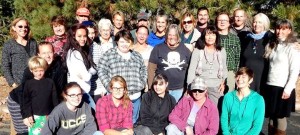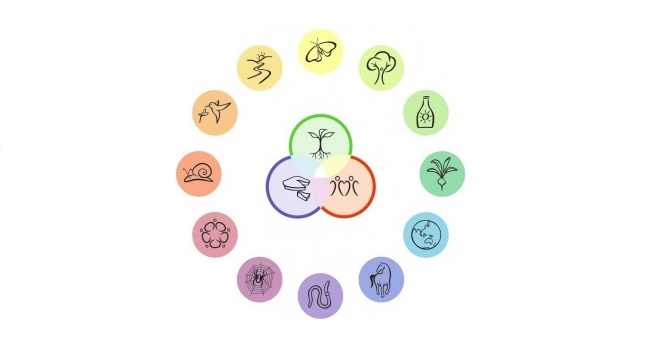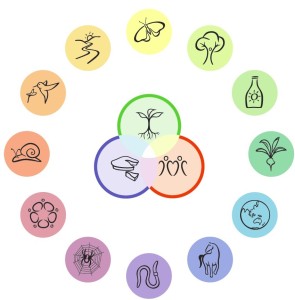The last weekend of Pikes Peak Permaculture’s 2015 Permaculture Design Certification class was exciting and nerve wracking – especially for me.
While teams presented their designs to the whole class, to Pikes Peak Permaculture Guild members and to site representatives, I paced the hall outside.
Finally Karen, one of my fellow students, took me by the shoulders, looked me straight in the eyes and said, “Don’t worry, it’s us!”
It was the best thing anyone could have said and a statement that summed up what this course meant to its participants. By the end, we no longer were individuals taking a class; we were “us.”
 We had spent a weekend a month together for eight months. We had held hands in a circle, sang sweet, silly songs and had cooked and eaten meals together.
We had spent a weekend a month together for eight months. We had held hands in a circle, sang sweet, silly songs and had cooked and eaten meals together.
During the fifth weekend we broke up into teams, two teams for each of three sites. During the next three months, teams had to figure out how to work together. We met outside of class in homes and restaurants and it didn’t matter if our brains reasoned the same way or not, we had to make it work. And for the most part, it did.
As the months passed, the world started looking strange. Houses weren’t built correctly. They captured little of the sun’s energy. Why were they constructed with toxic materials and without regard for energy efficiency? Suddenly, yards seemed naked without food growing everywhere. And good grief, why were there no greenhouses? Watching water run unchecked into the storm drain now seemed criminal. Seeds, leaves and animal waste became valued beyond gold. Had we lost our minds?
No. We had come to our senses.
We had grown less satisfied with the world we live in because the paradigm had shifted.
Then the day came to present our designs and, even though I was proud of my contribution, I wasn’t sure I could communicate coherently. I bumbled through it, forgetting words, standing in front of my drawing and running out of time, but I received my certificate along with 23 others.
In the last moments of that last day, we sat in a circle and talked about what was next for each of us. Tears flowed; some were sad, some frustrated, some happy. It was Okay, though, because it was us.
And for me, it spoke of something even deeper. For me, the tears expressed how Permaculture turns the world upside down, where your feet are firmly planted in the soil, bringing you back to a place that feels right, a place that feels like home.





